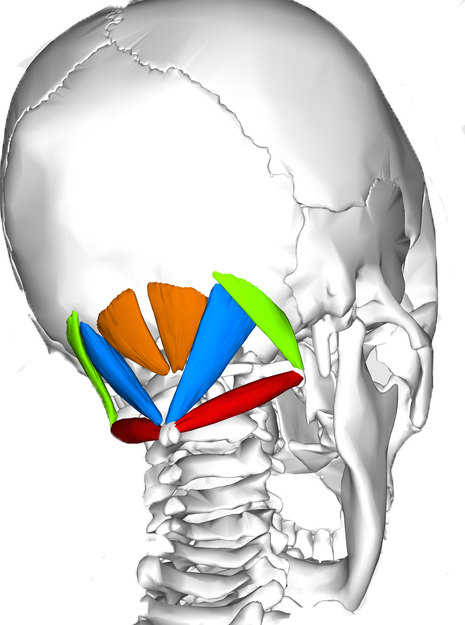| Back to Back Issues Page |
 |
|
Massage Message Issue 21: On-site massage for nurses, MLD for high heels, Massage for period pain an May 21, 2015 |
What is new at Touching Well? This is a bumper issue of the Massage Message. It contains all of the articles in the printed Massage Message. Recently I received warming feedback from a client I have known for years. I met her first in a baby massage class I was teaching many moons ago, the baby is now a teenager. We kept in touch, and last year she started coming on a more regular basis. This is her story: Weight Loss Journey
Over the years I think I have been in denial about my body, ignoring my problem weight and not really facing up to potential health problems for the future. I knew I wanted to change and live happily and healthily, I wondered if Regina might be able to help. I decided to give it a try and I’ve been seeing her every 2-3 weeks since just before my surgery.
The powerful thing about having massage with Regina is that she is non-judgemental about my body. In itself this is very healing – when you have a massage your body is being treated with kindness and respect and somehow over time the massage is
helping me to do the same.
Massage is helping me to become more body aware, to notice changes and be more accepting of myself. I have learned that my body does not have to be perfect, it’s quite valuable and wonderful as it is (although it’s appreciating the help that’s coming its way!)." Click here to read the rest of her story.
What is new at Touching Well? Recently I have been on Maya Therapies Pregnancy course with Rosita Arvigo, which has been absolutely amazing. I feel that this has consolidated the pregnancy massage I have been offering, with some wonderful moves on the pregnant belly (usually after week 20). The beneficial techniques on the hips in Arvigo therapy are carried over to the pregnancy work, hence Emily's feedback:
I would like to share Raadhiyah's story, as I am bowled over by it. She came all the way from Bradford for a (chronic) prolapsed uterus, felt fatigued with constant backache. After just one session she felt better for FOUR weeks.
Small but important The suboccipital muscles are four small muscles between the first two cervical vertebrae (C1 - atlas or C2 - axis) to the base of the scull (except obliquus capitis inferio). They rock and tilt the head into extension. They also help to stabilize the head on top of the neck. Amongst those four muscles the rectus capitis posterior minor (in orange) is particularly important. It has a high density of muscle spindles, implying that it not so important for movement, but more for sensing the relative position of the head and cervical spine (known as proprioception). Therefore, atrophy (wasting away) of the rectus capitis posterior minor can lead to a delcine in proprioception and standing balance, also headaches. (J Manipulative Physiol Ther. 1997 Jan;20(1):24-9). And, interestingly, it can also lead to lower back pain. (Man Ther. 2004 Aug;9(3):157-63)

Tight suboccipital muscles will lead to the head being pushed forward. This is often in combination with a rounded upper back and hunched shoulders. It is common, and our lifestyle does not help. This can lead to headaches. "Soft" tissue therapy (a misnomer, the tissues in this case are not soft!), stretching (chin down, stretch the back of the neck!) and exercise can help to alleviate tension in the suboccipital muscles. What's more, tightness in these muscles are associated with tight hamstrings! A recent study showed that releasing tight suboccipital muscles would increase hamstring muscle elasticity, i.e. their fingers were closer to the floor on a forward bend and they could get their leg further up in a hamstring stretch in comparison to the control group (who received a placebo manual therapy - if there is such a thing?). (J Phys Ther Sci. 2015 Jan;27(1):195-7). In the world of work many activities encourage our head making its way forward, long hours in front of the computer being one of them. Guess what? On-site massage helps, not only with the neck, but also with the whole the back, and even the hamstrings. For now, let your chin drop unto your chest (like nodding) and use the weight of your head to stretch out your suboccipital muscles – wonderful after a stint on the computer. When you continue on the computer, remember to lift up from your chest to sit upright, with your shoulders back, and your head balancing on top of your neck. And smile!
Massage for the heart Patients admitted to emergency coronary care are stressed, not only due to the heart problem they are admitted for, but also due to the unfamiliar surroundings and unknown consequences of their illness. A recent study looked at whether a full body massage helps with that stress and improves the vital signs (blood pressure, heart rate, breathing). The study involved 120 patients with acute heart disease in a coronary care unit. All had "routine care", and half of them received a whole body massage as well. The massage reduced the anxiety level of the patients. Blood pressure, heart and breathing rate were decreased, too. This shows that a whole body massage for a person with heart disease really calms them down, not only mentally, but also physically by stabilizing their vital signs. (Med J Islam Repub Iran. 2014 Jun 17;28:47).
Massage for arthritic neck pain Up to now there was no clear evidence that massage for neck pain due to arthritis really helps. Also, other studies looked only at self-reported pain. This recent study tried to remedy that by looking at range of motion (ROM) and the associated pain of ROM as well as self-reported pain. Staff and faculty members at a medical school with neck arthritis pain were randomly assigned to a massage or a waiting list control group (with 24 per group). The massage group received moderate pressure massages weekly by a massage therapist plus daily self-massages. The waiting list group received the same schedule massages one month after being control subjects.The massage group reported less pain and pain associated movement, as well as a greater range of motion than the control group. The control group benefited from the massage in a similar way after their massages, but not quite as marked. Therefore, the the self massage increased the positive effects of massage by a therapist, as well as helping to maintain them. (Complement Ther Clin Pract. 2014 Nov;20(4):219-23). This study shows that firstly, regular weekly massage can help to reduce pain and increase range of motion for people with arthritic neck pain. Secondly, self massage enhances the benefits of regular massage by a therapist. To encourage weekly massages I have a special offer of four weekly treatments for £144, £36 per session instead of £42.
Myofascial pain syndrome Myofascial pain syndrome is a chronic pain disorder. In this syndrome, pressure on e points in muscles (trigger points) evokes pain in seemingly unrelated parts of the body. This is called referred pain. It typically occurs after a muscle has been contracted repetitively. This can be caused by repetitive motions used in jobs or hobbies or by stress-related muscle tension. While nearly everyone has experienced muscle tension pain, the discomfort associated with myofascial pain syndrome persists or worsens. Similar to the previous study, this group of people also benefited in terms of pain and increased daily function if they not only had physical therapy, but also massaged themselves and exercised at home. (J Phys Ther Sci. 2015 Jan;27(1):217-21)
Acupressure in pregnancy A recent study looked whether holding one acupressure point reduces the level of anxiety in women with pregnancy diabetes compared to touching just any (sham) point. They found that the acupressure group had lower anxiety even two days after holding the acupressure point. This really shows the power of acupressure, as there is likely to be a strong “placebo” effect just from touch alone. (Clin Nurs Res. 2015 Apr 6).
Does MLD spread cancer? When I first qualified as a lymphoedema therapist 10 years ago (is it really that long ago?) a big worry was whether Manual Lymph Drainage, or indeed any massage in the area, would spread or activate any cancer that might be present. At the time I was reassured that MLD was safe, and would indeed help people's lymphoedema. A recent study confirms this approach. The study looked at 1,106 women who were diagnosed with breast cancer between 2007 and 2011. Women were divided into two groups: The first group of 996 patients did not receive any MLD, regardless of whether they developed breast cancer-related lymphoedema (BCRL) after cancer treatment (I hope the women with BCRL were treated with compression therapy). The MLD group had 110 women with lymphoedema. All patients were monitored until October 2013 to check whether the breast cancer recurred anywhere (local, regional, distant metastasis). During the monitoring period the cancer came back in 166 women (15.0%), 154 (15.5%) in the non-MLD group and 12 (10.9%) in the MLD group, on average (median) after 1.85 years. What contributed to the recurrence of cancer? There was no evidence that MLD made it more likely. Having a larger tumour in the first place, a high number of affected lymph nodes and tumour histological grade 3 made recurrence more likely, while positive progesterone receptor status and receiving radiation therapy made recurrence less likely. This study shows that MLD does not increase the risk of breast cancer recurrence in women with lymphoedema. (Ther Clin Risk Manag. 2015 Feb 27;11:349-58).
Does MLD prevent lymphoedema? This study looked at lots of scientific papers to determine what affects the development of lymphoedema after breast cancer treatment. In four papers scientists investigated whether MLD does prevent lymphoedema. In all four studies the MLD group fared better, but only in two of them (statistically) significantly so. However, in the two "non-significant" studies every woman received a treatment which could potentially prevent lymphoedema (physio or compression), plus MLD. So the jury is still out, but the odds go in the right direction. Even though MLD is not (yet) shown to prevent lympohoedema, it supports women in their healing journey during and after breast cancer treatment. Progressive resistance exercise does not increase the risk of developing lymphoedema, provided that symptoms are closely monitored and adequately treated if they occur. So no harm in starting with the gym again, but observe how your arm is doing. Similarly, starting shoulder exercises early does not increase the risk of lymphoedema, initially the shoulder mobility is better in comparison to starting shoulder mobilisation exercises later. After one year though the shoulder mobility is about the same, regardless of start of exercise regime. (Cochrane Database Syst Rev. 2015 Feb 13;2:CD009765).
Recent feedback I really don't know what Regina done to me BUT my spine is well. I cannot remember my spine being pain free, so I am well impressed. Louise, Mansfield. Fantastic, helped with my stiff neck. For two weeks pain free. Sharon, Sangenic, Mansfield Regina is helping me accept myself and learn to love my body and that’s priceless. Anon, Nottingham I look forward to seeing you. With warm regards, Regina
Issue 21 of the Massage Message: 1st November 2014.
|
| Back to Back Issues Page |
